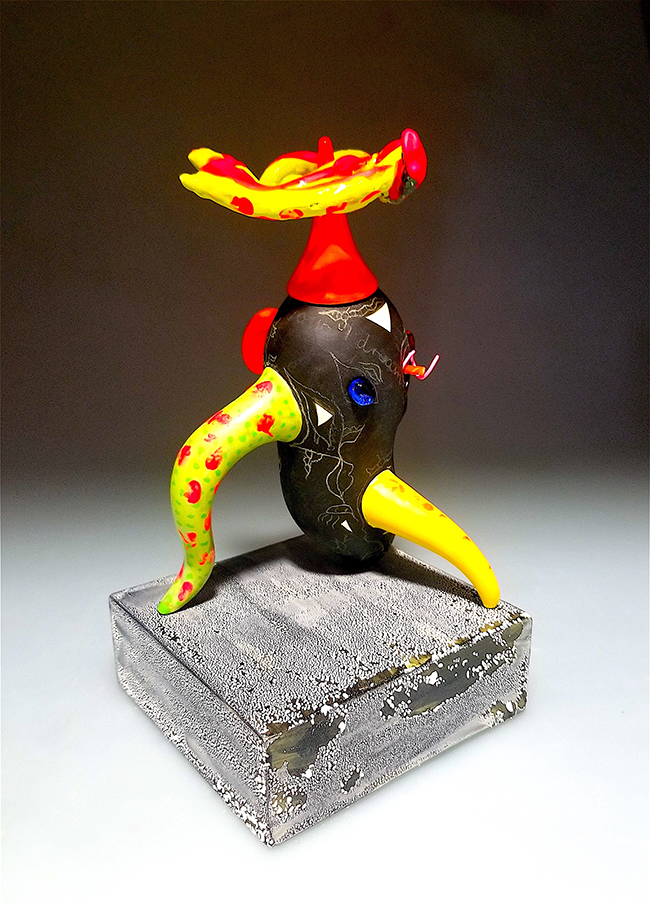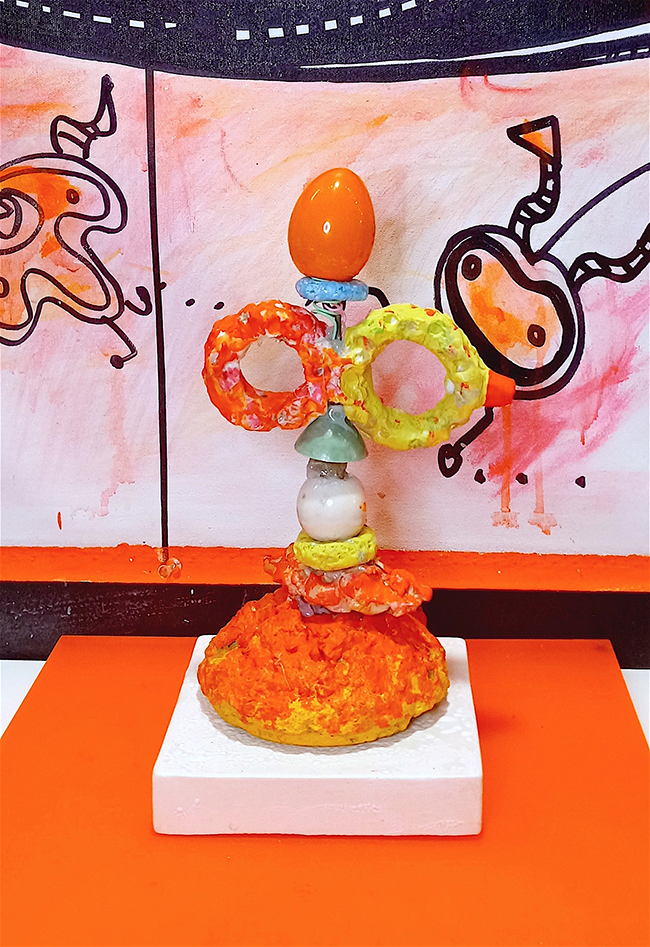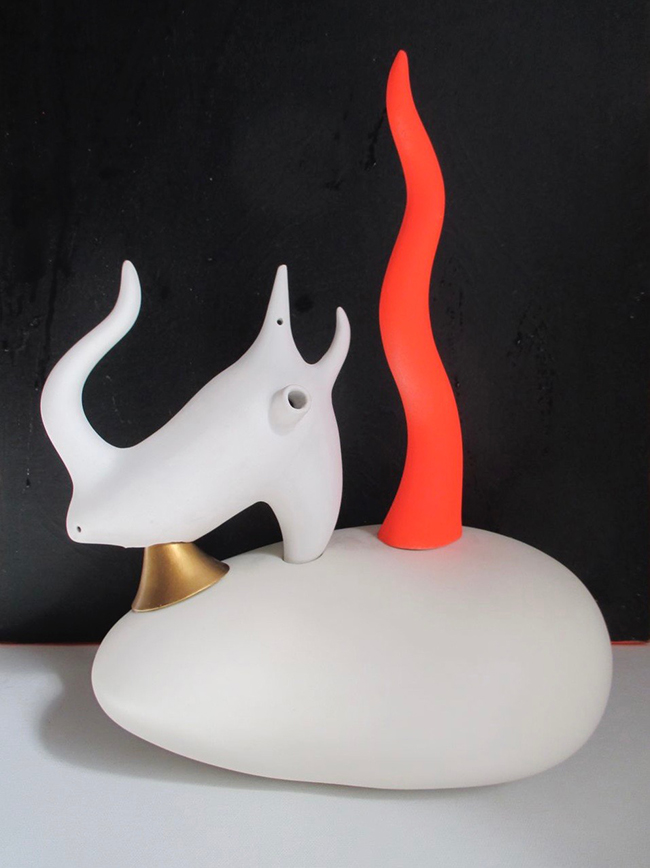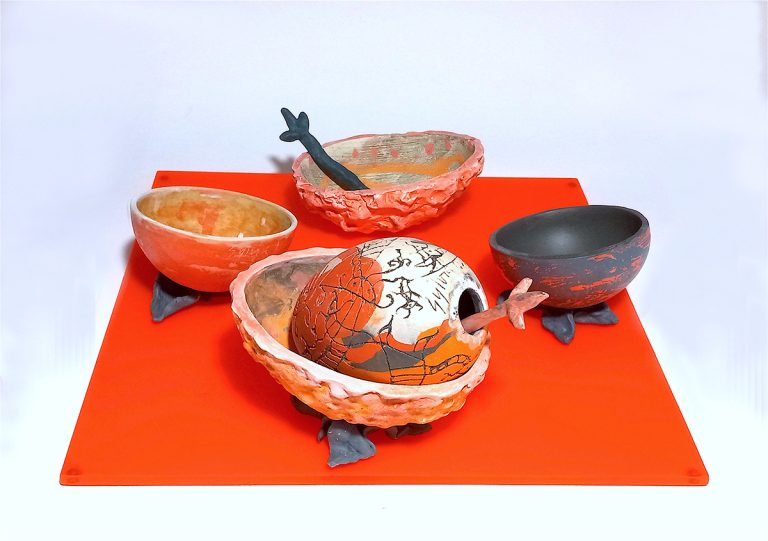Sylvia Nagy has built a career that quietly blurs the lines between art and science, structure and feeling. Born in Hungary, her foundation in ceramics began at Moholy-Nagy University in Budapest, where she earned her MFA in Silicet Industrial Technology and Art. That blend—art and tech—has defined her path ever since. Later, at Parsons School of Design in New York, she was invited to teach and even created her own course on mold model making. Nagy’s work has taken her across the world—from residencies in Japan, China, Germany, and the U.S., to exhibitions in France, Spain, Korea, and beyond. She is a member of the International Academy of Ceramics in Geneva, and when not shaping clay, she explores other creative outlets—dance, fashion, design, and photography. Her art is rooted in ceramics, but her curiosity moves freely across mediums and cultures.

Nagy’s recent body of work reflects this freedom. Her sculptures are not about copying what we see. They aim to show what can’t be seen—the tension, the mystery, the soft edges between certainty and chaos. Her materials are traditional—porcelain, plaster—but what she does with them speaks in an abstract, modern vocabulary. Geometry meets fluidity. Cubes meet waves. It’s a conversation between the fixed and the flexible, and somewhere in that back-and-forth is where she thrives.

Living in New York has sharpened her sense of pace and contrast. In a city that moves fast and never stops, she brings slowness to her process. She allows her ceramics to reflect life’s speed without being swallowed by it. She talks about the world being full of contradictions—life and death, fragility and strength—and her art mirrors that. A porcelain piece might be delicate enough to break with a tap, but the ideas inside it are heavy with meaning.

A theme that runs through Nagy’s work is connection. Not the digital kind, but the soulful kind. She believes we are all part of a bigger rhythm, a flow of vibrations and energy. Sound, form, matter—everything moves, shifts, and vibrates. She channels this belief into her sculptures, often incorporating mirrors and wave-like forms to reflect this invisible rhythm back at the viewer. What seems like a static wall might ripple into a soft curve. Her pieces often play with that moment—when a solid becomes a wave, when something hard reveals its softness.
Minimalism has entered her visual language in recent years. Her earlier works carried more decoration, more visual noise. Now, the ideas are still there, but the forms are cleaner. Stripped down. The contradictions are still present, but they’re quieter now—less shouting, more whispering. Even when she works large—like in murals or installations that combine ceramic elements with painting—the shapes keep their restraint. There’s a focus on balance, even when talking about imbalance.
She often draws on techniques she first learned in art high school—fresco, mosaic, enamel, scraffito—and adapts them to fit the contemporary pieces she’s making now. But it’s not nostalgia. It’s continuity. For Nagy, history repeats, but always with variation. So do materials. So do ideas.
Her use of mirrors is particularly interesting. They don’t just reflect the viewer—they reflect the space around the work, making the sculpture part of its environment. They also play into the larger themes of identity, self-perception, and our place in a larger system. Just like waves and frequency, mirrors distort, reflect, and bend reality. It’s not just about what you see—it’s what you sense.
Nagy believes that art isn’t just an object. It’s a feeling. A moment. A dialogue. Sometimes, it’s quiet. Sometimes, it’s loud. But it always speaks to something beyond words. Her work isn’t didactic—it doesn’t try to teach or explain. Instead, it invites. It suggests. It holds space for contradiction and doesn’t try to resolve it. That’s what makes it feel real.
Whether she’s working with hard-edged cubes or soft organic forms, Nagy keeps returning to one core idea: everything is connected. Everything changes. And in that tension between form and formlessness, there’s room for something deeply human. Something that can’t always be named—but can be felt.


